Do you fancy exploring the region in a bit more depth?
Here are some suggestions, sometimes close at hand, sometimes further afield, for you to plan your program!
Close at hand…
The Etang de Thau lagoon
The étang de Thau is the largest lagoon in the Languedoc-Roussillon region. Bouzigues oysters have been farmed there since ancient times. Here shellfish farming is king and the oyster beds stretch as far as the eye can see. Dive into the heart of this centuries old industry, your mouth will be watering!
All around, you will find splendid landscapes filled with shades of blue from the water and the sky, a contrasting nature where the sea meets the mountains and ancient villages full of charm and authenticity.
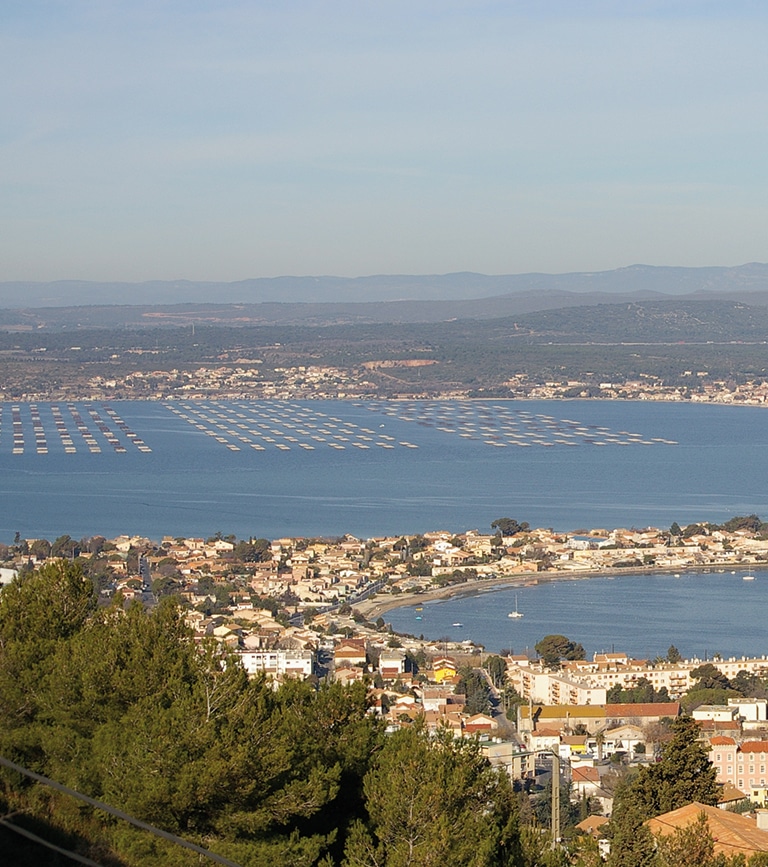
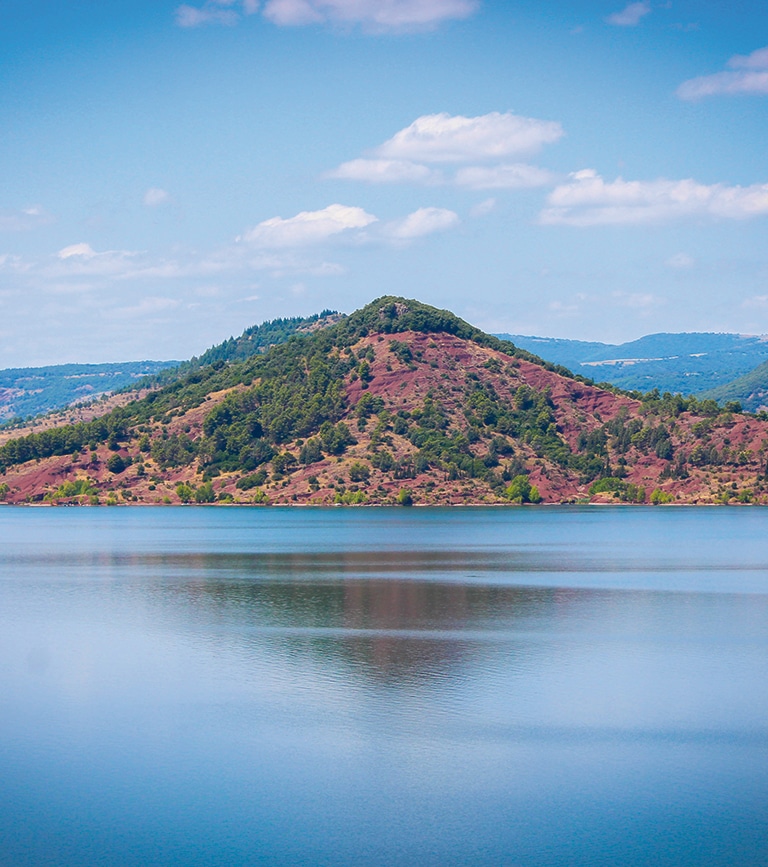
Lake Salagou
Lake Salagou is a man made lake, created by the construction of a dam in the 1960s on an old volcano. It is a useful water reserve for irrigation, flood prevention, electricity production, fire fighting…
It is a unique place for outdoor activities: pedalos, paddling, canoeing, fishing, swimming, walking, cycling, archery, petanque… or just relaxing if you want!
The deep blue of its waters mingles with the intense red of the ‘ruffe’, a 250 million year old rock formed from the oxidation of iron salts. Animal species have evolved, such as the crayfish and locusts which have adopted the red colour of the earth to blend in with the landscape. Pretty clever!
The Cirque de Mourèze
This 340 hectare natural site is as unique as it is unusual! The limestone rocks, formed 160 million years ago, are constantly eroding with the wind, the rain, and the cold and they are always changing. You will be surprised by these gigantic dolomitic rocks with their strange and bizarre shapes. Let your imagination run wild!
In this natural labyrinth, you can find various hiking trails and remarkable views.
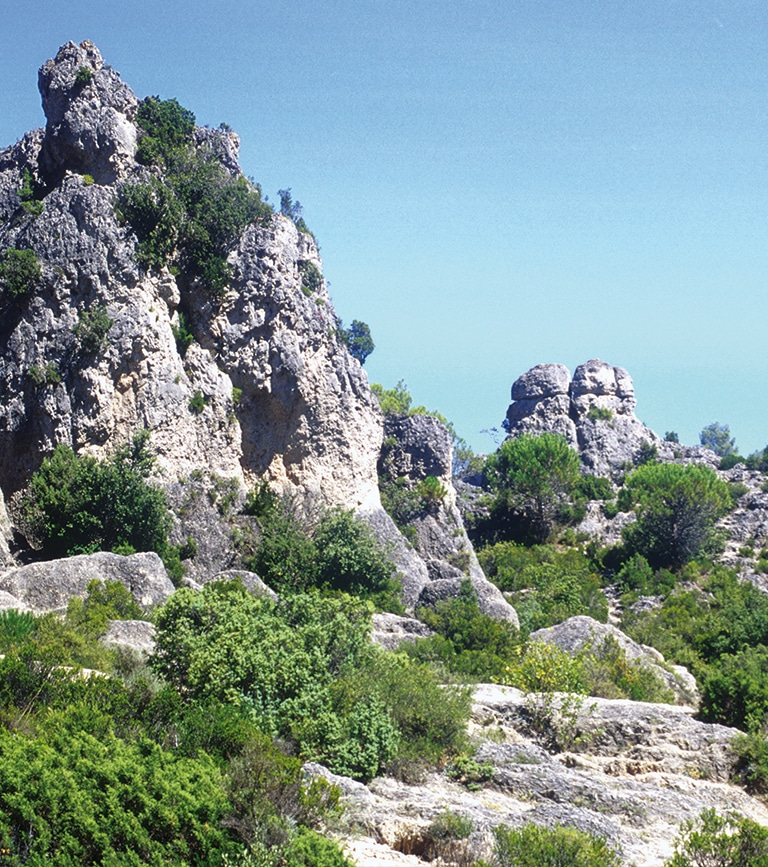

Valmagne Abbey
Founded in 1139 by Benedictine monks, Valmagne is one of the most beautiful Cistercian abbeys in France but also one of the oldest vineyards in the Languedoc, located in Villeveyrac.
This ‘cathedral of vines’ is open to visitors. You can admire the impressive nave transformed into a wine store, the cloister, the Florentine fountain and gardens, and the chapter house with its basket handle vault. You can also walk in the Simples garden, visit the grape variety conservatory before tasting organic wines from the estate, or have lunch at the vineyard restaurant where the dishes are prepared with organic products from the vegetable garden.
This beautiful, unspoilt setting hosts many exhibitions and a summer music festival.
Saint-Guilhem le Désert
Recognised as one of the most beautiful villages in France, is also a spiritual stop on the Way of Saint James to Compostela.
The Abbey of Gellone, a jewel in the Languedoc’s Romanesque art, is classified as a UNESCO World Heritage site. It houses the relics of Saint-Guilhem and the True Cross. The Abbey Museum describes the eventful history of Gellone and its cloister.
This small medieval town invites you to stroll through its picturesque streets and admire the Renaissance mullioned windows, twin bays and Gothic lintels. The many craft workshops offer unique and original creations by local artists. It’s worth visiting the village square to see the impressive plane tree, planted in 1855, which looks magnificent in its greenery.
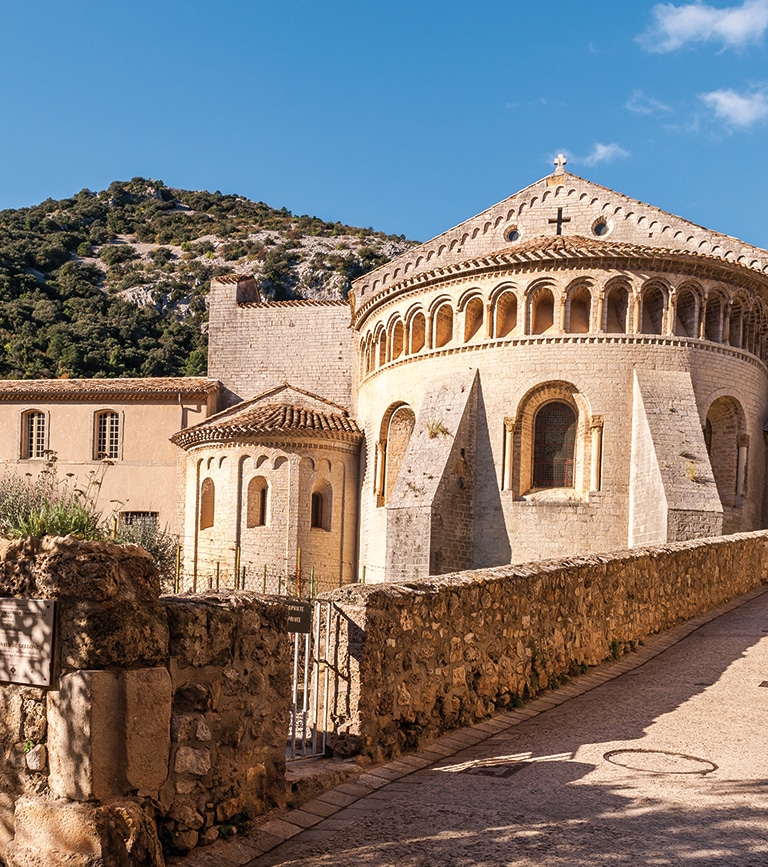
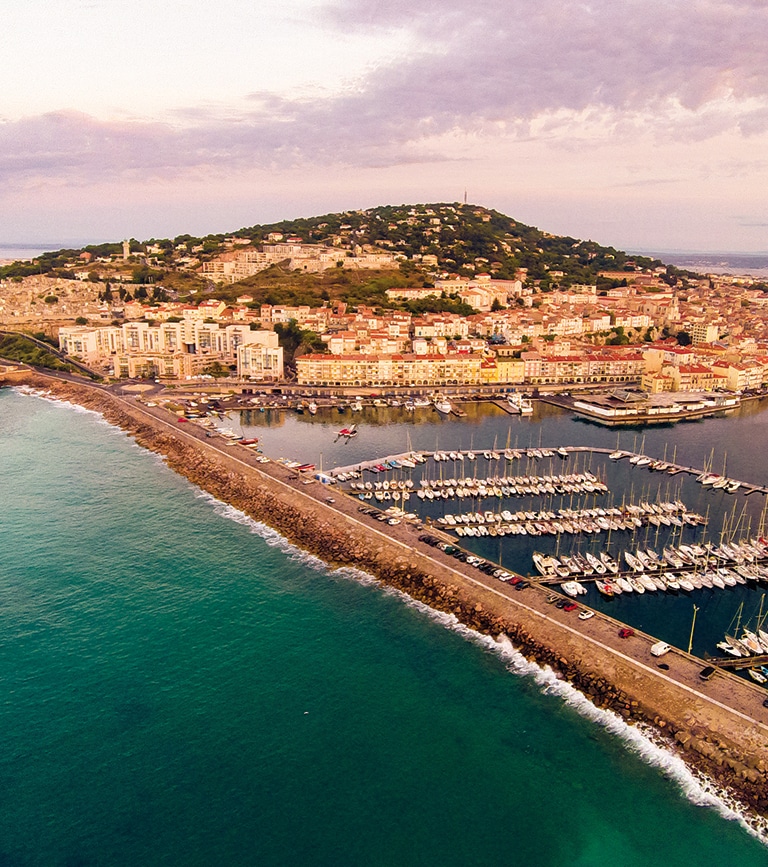
Sète, the Singular Isle
Just 30 kilometres away, Sète, the Singular Isle, as Paul Valéry named it, will charm you. It has a Venetian air in the Languedoc, with its canals. From Mont Saint-Clair, the panorama of the town has the feel of the Brazilian Corcovado. Explore the port and the 12 kilometres of beach, study the patinated facades of the artists’ studios. Enjoy local specialities and relax to the Sète rhythm!
Take a short trip to Pointe Courte, a typical, colourful fishing district!
Béziers
Béziers is a city with centuries of history inscribed in the stone of its temples, mansions, châteaux and in the vines of its ancient vineyard.
The must-see places to visit are the historic centre and the Saint-Nazaire cathedral, the Bishops’ Garden, the Canal du Midi and the site of the 9 Locks of Fonseranes, a UNESCO World Heritage Site.
This southern city cultivates the sense of celebration and traditions, rugby union and the Feria are essentials for fans and party goers!
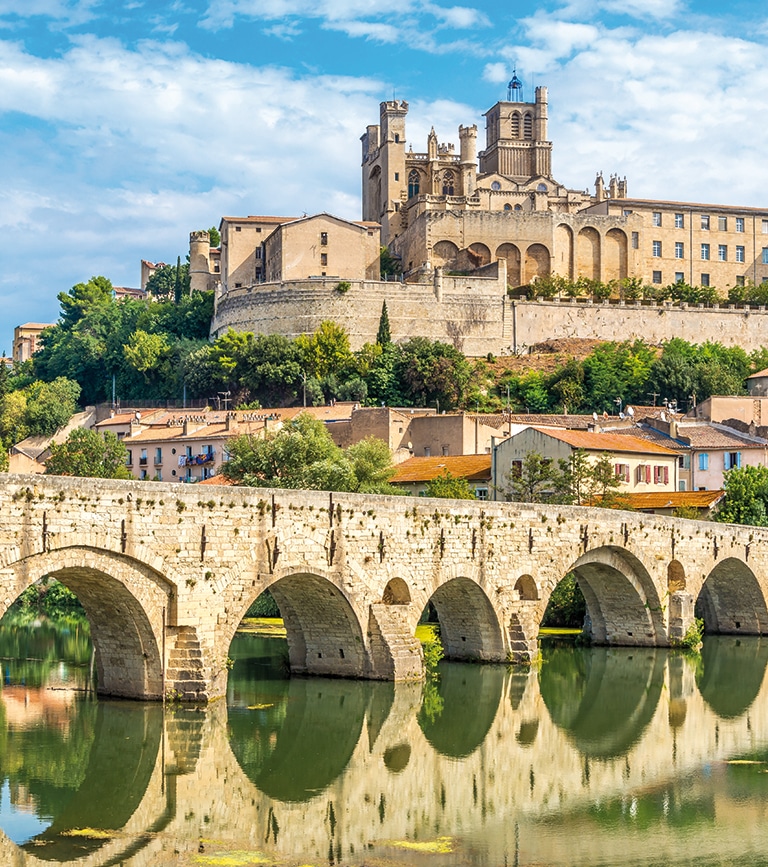

Montpellier
Montpellier, whose origins date back to medieval times, is full of heritage and modern treasures. The streets of the city centre, the Place de la Comedie, the Faculty of Medicine, and the royal place of Peyrou are the must-sees. This modern metropolis is also open to contemporary culture and architecture.
A vibrant city, it hosts events of all kinds throughout the year.
Narbonne
Founded in 118 BC and the first Roman colony outside Italy, Narbonne has existed for 2,500 years. And of course, all this history leaves its mark!
Narbonne, city of art and history, offers a wealth of diverse heritage, allowing you to travel through the great historical periods: Antiquity, Middle Ages, Renaissance, and the Golden Age of wine in the late 19th century, all these periods have left their mark on the city. The heart of the city is home to treasures, listed monuments, museums, the polished cobblestones of the Via Domitia… and, of course, the birthplace of a great name in French music: Charles Trenet.
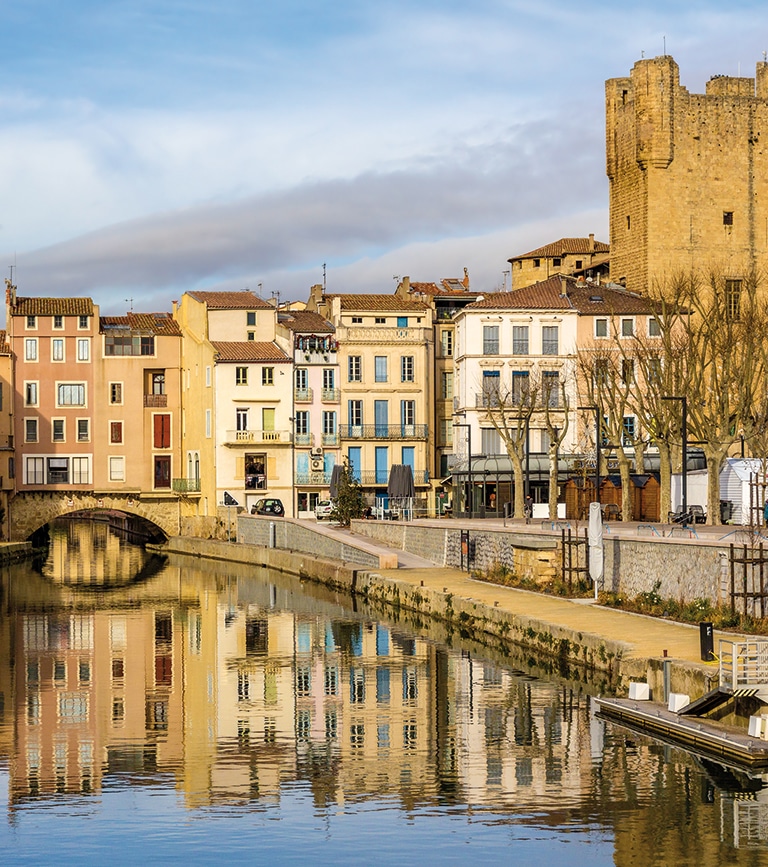

A little further…
Carcassonne, the medieval city
Listed as a UNESCO World Heritage Site, the medieval citadel of Carcassonne remains the most formidable fortified ensemble still to be admired in Europe. All the architecture of the Middle Ages can be seen over the three kilometres of ramparts, its 52 towers, monumental gates, barbican, castle and the Basilica, and through the labyrinth of alleys, stairs, baffles and postern.
A real anthology of stone!
Nîmes
Nimes is rooted in its 2000 years of history, yet turned towards the future. It is full of beautiful surprises!
The historic centre of Nimes is home to examples of Antiquity, the Middle Ages, the Renaissance, as well as the sober grandeur of the Classical Age and the proud designs of the 19th century.
Around its Roman arena, the Maison Carrée, or its majestic Roman temple, discover the discreet wealth of the mansions and the majesty of the Jardins de la Fontaine, which were established in the 18th century on an ancient site.
Nimes is unique and looks to the future through bold urban planning and architecture from the greatest designers.
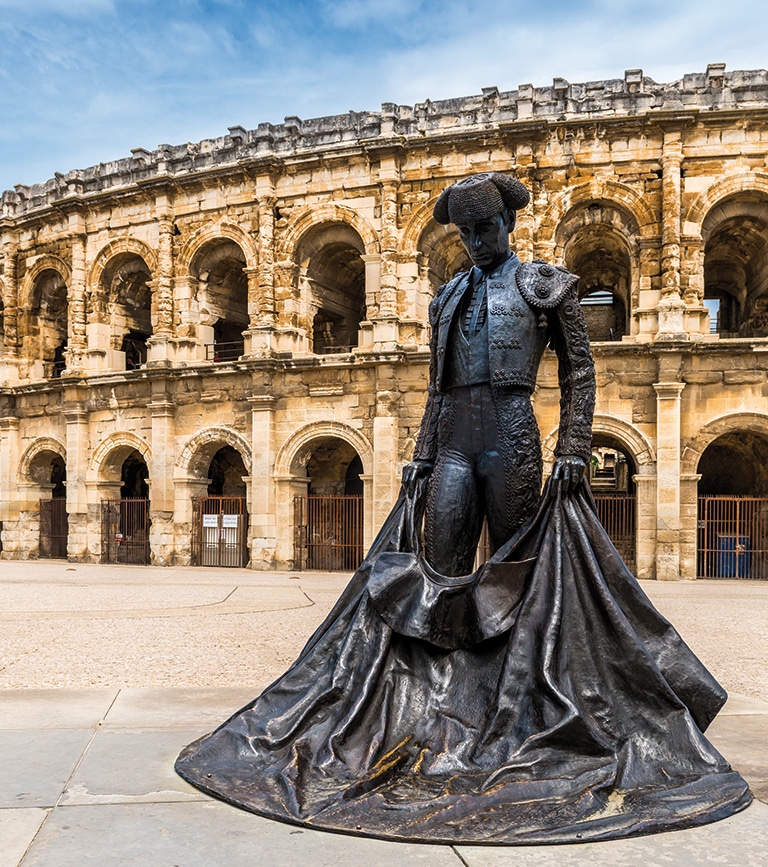
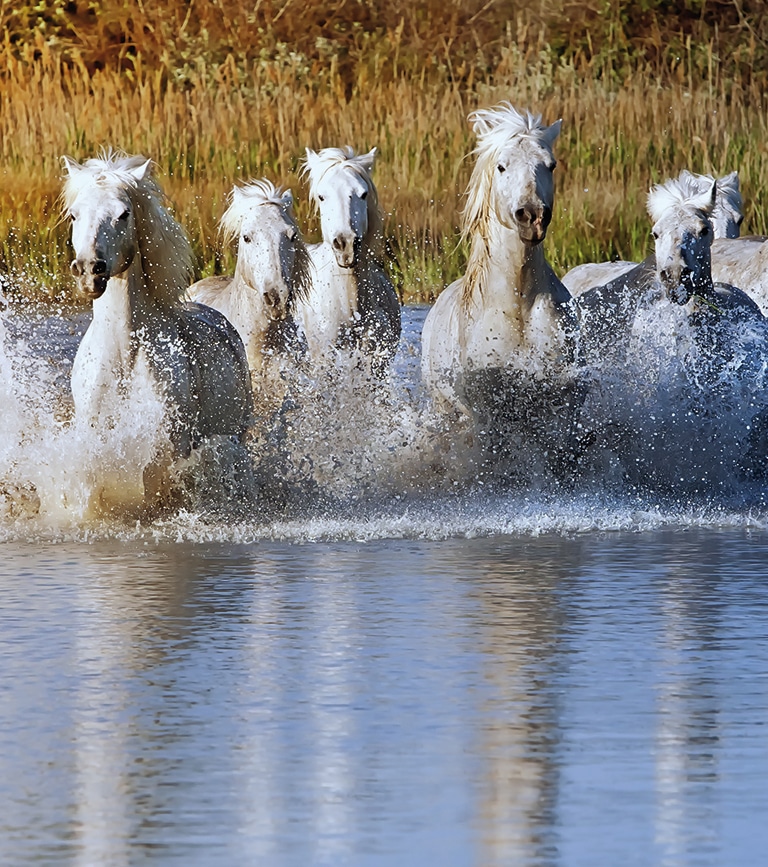
The Camargue
Classified as a UNESCO Biosphere Reserve, the Camargue is a territory located at the confluence of the Languedoc and Provence, the Rhone and the Mediterranean
It is an area of 150,000 hectares covered with ponds and lagoons.
A breeding ground for horses and bulls that live there in the wild amid flamingos and hundreds of other animal species, the Camargue is rich in its protective culture and traditions.
Walks or horse rides between the sea and ponds, a tourist route to discover towns with a rich historical past, water sports or lazing on the beach, you’ll be spoilt for choice!
The Cathars châteaux
Quéribus, Peyrepertuse, Montségur… what do these names say to you? Worth visiting or revisiting, even if you do have vertigo!
Standing on the top of the Corbières hills, these châteaux challenge the horizon between heaven and earth. Their history dates back to the 12th century. These citadels were built as a line of defence because of the Albigensian crusade. Over a few decades, the king built a series of defensive sites overlooking the valleys, bringing together the rugged terrain. They had various roles. Defensive elements against the powerful crown of Aragon, they oversaw the new border resulting from the Treaty of Corbeil signed in 1258.
Today, the châteaux offer visitors breathtaking 360 ° views.
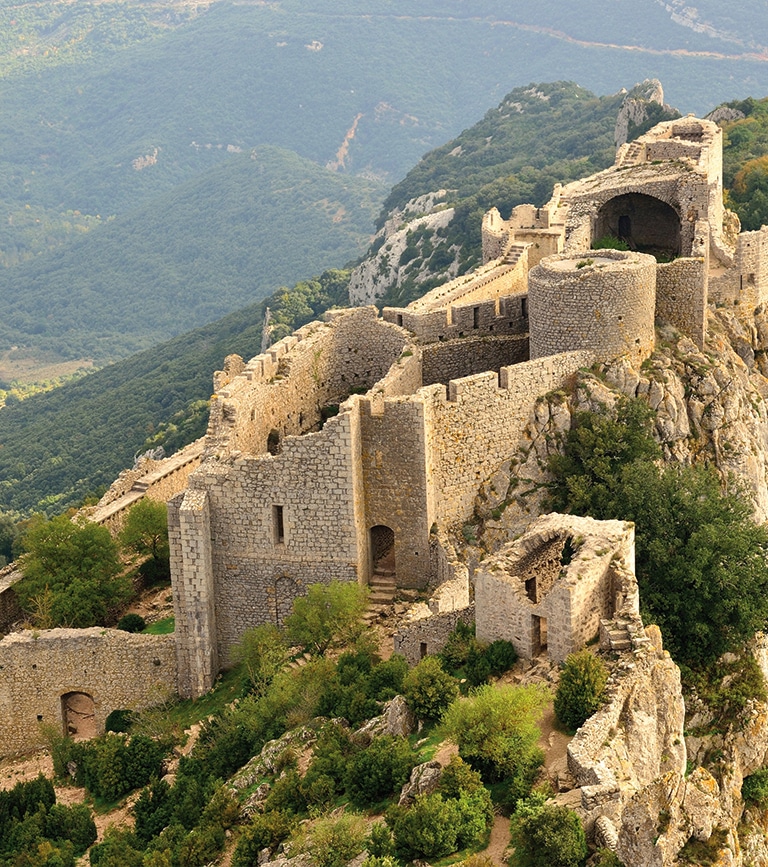
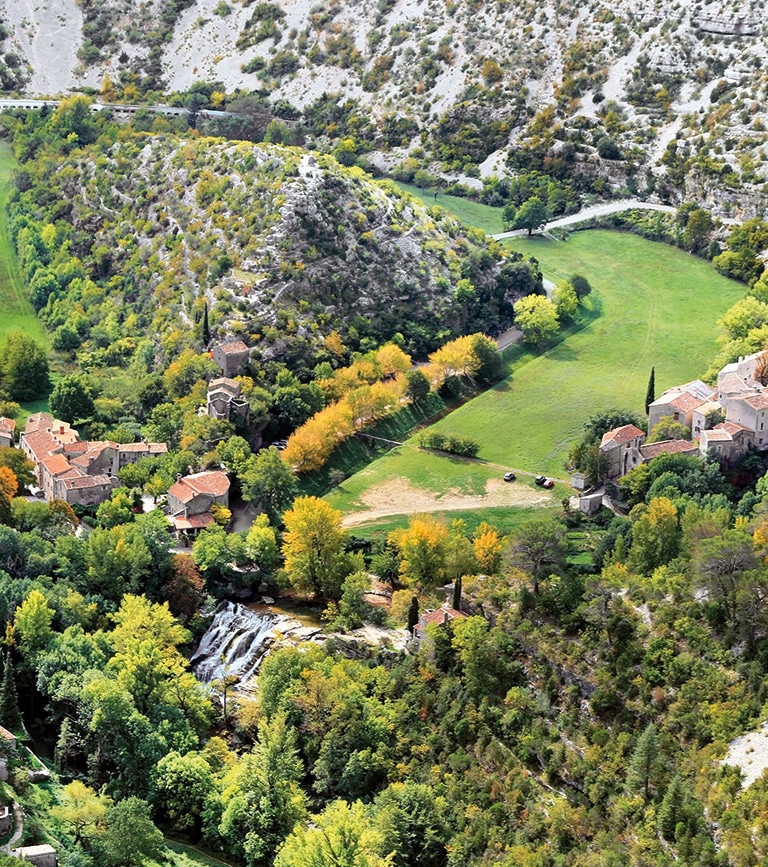
The Cirque de Navacelles
Nestled in the heart of the Blandas and Larzac limestone plateaux, this ecological and geological jewel is recognised as a Grand Site by the Ministry of the Environment.
For thousands of years, water has carved out the impressive gorges in this protected natural area, which is home to rare and exceptional flora and fauna.
If you are looking for awe and grandeur, or a breathtaking panorama, various viewpoints are available.
The Cirque de Navacelles and its region make up an ideal setting for relaxation, walking, hiking, swimming, fishing, etc.
The Millau viaduct
Stunning!
Built between December 2001 and December 2004, the Millau viaduct fits perfectly into its landscape of lush greenery and limestone cliffs.
Located in the heart of the Aveyron, this cable-stayed structure, consisting of seven pylons, is a true technological feat. With a length of 2,460 metres and a height of 343 metres, the motorway viaduct spans the Tarn valley with elegance. You can’t miss it!
To find out everything and to better understand this record breaking viaduct, there are two unmissable places
· The ‘Viaduc Expo’ exhibition, located in the Millau motorway services, accessible from the A75 or the boulevard du Viaduc
· The ‘Viaduc Espace Info’ information area, located under the bridge
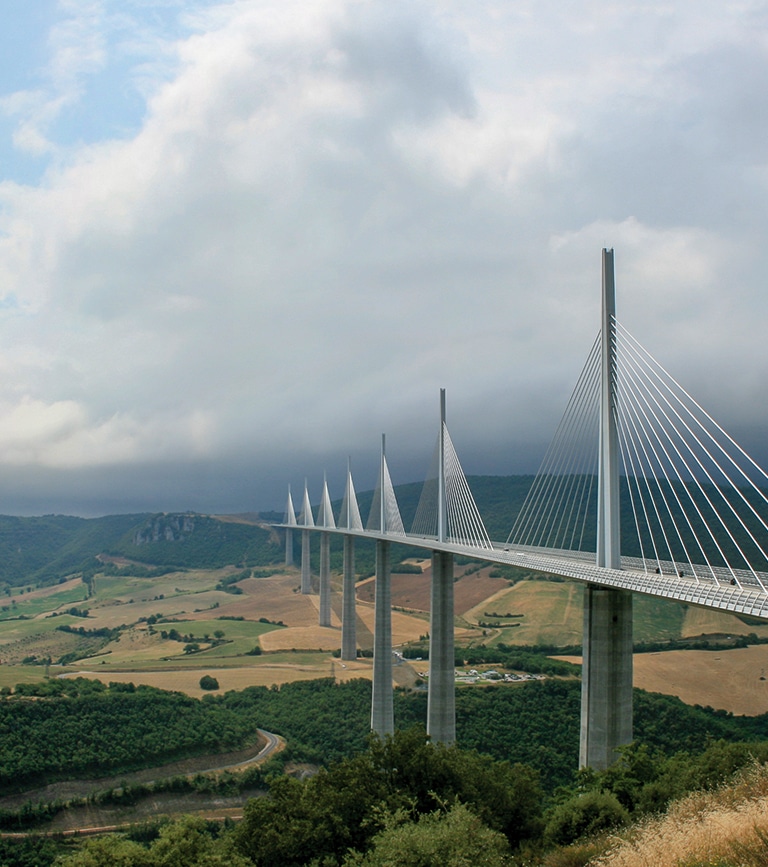
Crédit photo : Adobe Stock


